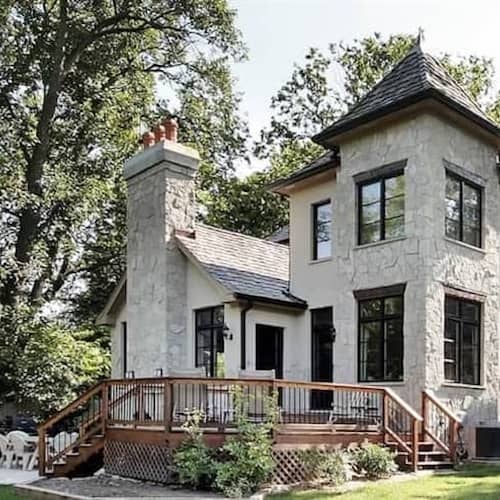Conforming loan limits in 2026
Contributed by Sarah Henseler
Dec 1, 2025
•4-minute read

When you get a mortgage, there’s a limit to how much you can borrow. On an individual level, this will be determined by how creditworthy you are and how much you can afford to spend each month.
At the industry level, lenders are limited by how much they can lend to borrowers if they want their loans to conform to the standards set forth by the Federal Housing Finance Agency (FHFA). Conventional loans that meet these standards are called conforming loans.
What is the conforming loan limit?
The FHFA sets conforming loan limits for Fannie Mae and Freddie Mac, the two government-sponsored enterprises that it regulates.
Fannie Mae and Freddie Mac purchase mortgages that meet their standards from lenders and then repackage them into mortgage-backed securities for investors. This process gives lenders the liquidity needed to continue providing home buyers with affordable mortgage loans.
Both Fannie Mae and Freddie Mac have additional criteria for the loans they purchase, including minimum credit scores, minimum down payments and maximum debt-to-income ratios (DTI). But in general, when people talk about conforming loan standards, they’re talking about loan limits.
How conforming loan limits work
Conforming loan limits are tied to home prices. Each year, the FHFA updates its baseline loan limit based on its House Price Index (HPI) report, which tracks the average increase in home values over the previous year.
The new loan limits are calculated each year based on third-quarter data from the FHFA HPI. In 2026, the loan limit increase is 3.25%.
2026 conventional loan limits
The official 2026 conforming loan limits are the following:
| Number of units | Lower 48 | Alaska and Hawaii |
|---|---|---|
| 1 | $832,750 | $1,249,125 |
| 2 | $1,066,250 | $1,599,375 |
| 3 | $1,288,800 | $1,933,200 |
| 4 | $1,601,750 | $2,402,625 |
These are officially updated each November with the release of third-quarter Home Price Index data from the Federal Housing Finance Agency.
Conforming loan limits in high-cost areas
Home prices vary quite a bit from state to state, and even from county to county. This makes having a single conforming loan limit for the entire country difficult – after all, it’s hard to compare home prices in rural Ohio to home prices in Manhattan, one of the most expensive real estate markets in the country.
This is why the FHFA has a higher limit for areas it deems to be “high cost,” a designation based on an area’s median home values compared to the baseline conforming loan limit.
The exact conforming loan limit varies depending on the median home value in a given area, up to 150% of the baseline conforming loan limit. To see what the current limit is in your county, use the FHFA’s interactive map.
An example of high-cost area limits
To see what this might look like in practice, let’s say you’re considering buying a $900,000 house in California.
If you were to buy that house in San Bernardino County, which isn’t currently listed as an FHFA high-cost area, you’d likely need to take out a jumbo loan, since you’d be exceeding the $832,750 baseline loan limit.
However, Los Angeles County is traditionally one of the most expensive areas in which to buy a house in the U.S. It's at the top end of the scale ($1,249,125 for a single-unit home). You would be able to buy the house without a jumbo loan.
In addition to being the ceiling in high-cost areas, the highest conforming loan figure for a given number of units is also the loan limit in Alaska and Hawaii.
What to consider before you borrow more than the conforming loan limit
If you’re considering purchasing a home outside of the conforming loan limits, be sure you understand whether you can afford a non-conforming loan and what this type of loan would mean for your finances. The larger the loan is, the higher your monthly payment will be.
This is especially important to consider in high-cost areas. Even with higher loan limits, much of the local inventory could still exceed the high-cost loan ceiling.
Things to consider before using a jumbo loan
What would a jumbo loan mean for your finances? The upfront cost alone can be prohibitive for many borrowers. While conforming loans allow down payments as low as 3%, most jumbo loan borrowers are required to put down a minimum of more than 10%. They’ll also need to have a credit score in the 700s and a DTI of 45% or lower to qualify.
If you’re able to meet these requirements, a jumbo loan may be beneficial for you. But before you enter the home buying process, be sure you know what the loan limits are for your area and that you understand what a conforming versus a non-conforming loan would mean for your financial situation.
The bottom line: Remember loan limits if you’re purchasing a high-cost home
If you plan on purchasing your home with a mortgage and have a sizable home buying budget, it’s important to understand what the maximum loan limits are in your county. While other loan types, such as jumbo loans, can remove the barrier of having to stay within a certain price limit, that means forgoing the benefits of a conforming loan.
Take advantage of higher loan limits starting today! If you’re considering purchasing a home of your own, take action and start your mortgage application with the Home Loan experts at Rocket Mortgage.
Kevin Graham
Kevin Graham is a Senior Writer for Rocket. He specializes in mortgage qualification, economics and personal finance topics. Kevin has passed the MLO SAFE exam given to mortgage bankers and takes continuing education courses. As someone with cerebral palsy spastic quadriplegia that requires the use of a wheelchair, he also takes on articles around modifying your home for physical challenges and smart home tech. He has a BA in Journalism from Oakland University.
Related resources
6-minute read
Types of loans described
In this episode of The Red Desk, we’re going to go detail different types of loans, including conforming and nonconforming, jumbo, and more.
Read more

5-minute read
40-year mortgage: An explanation, the pros and cons
A 40-year loan term can bring down your monthly payment in exchange for paying more overall interest and some riskier features. Learn more about 40-year loan...
Read more

7-minute read
Cash-out refinance vs. HELOC: Which is best for you?
Cash-out refinances and HELOCs can help homeowners secure funds when they need them. Learn the difference between the two and choose which is best for you.
Read more